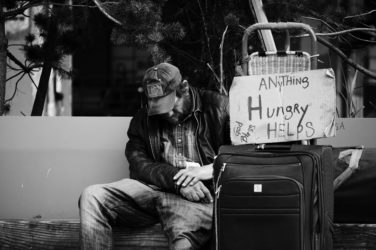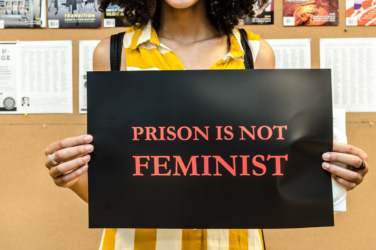There is a common misconception that people who inject drugs (PWID) don’t care about their health. However, their widespread participation in syringe access (needle exchange) and other available health services suggests otherwise. Stigma, complex involvement in shared experiences around substance use disorder, and moral investment in a patient’s substance use nevertheless frequently act as barriers to PWID accessing healthcare.
When someone breaks their skin multiple times a day or week to inject drugs, they face unique risk for contracting blood-borne pathogens and developing soft tissue and bacterial infections, meaning they frequently need more medical attention than their non-injecting counterparts.
Most commonly, people injecting will face abscesses (pus pockets) formed by the body to fight off skin tissue infections. Abscesses can run from moderate to severe, and at times require medical attention for proper lancing and draining. When not treated properly, abscesses can result in serious, ongoing health complications. There’s a financial cost of inadequate initial care, too. Denver, where I live, currently spends roughly $7,000 per day treating skin infections of this kind.
People who inject also face a range of other potential infectious foes. From cellulitis to endocarditis, bacteria in your bloodstream is serious business.
With that in mind, the tenuous relationship between healthcare providers and PWID is harming people at alarming rates—through factors such as lack of access to MAT and lack of care for blood-borne diseases, as well as injection-related infections.
When people feel their access may be threatened, they tend to avoid self-disclosure and attempt to self-care wounds that require professional care.
Beyond typical barriers such as ability to make a copay, transportation, enrollment in health insurance, health literacy and communication skills, as well as provider bias, marginalized people who inject drugs face specific challenges to having their health needs met in a sustainable way.
When people feel their access to insurance may be threatened by disclosing their behaviors around substance use, they tend to avoid self-disclosure and attempt to self-care wounds that require professional care. Regular participation in syringe access programs where people who inject drugs are given access to sterile supplies returns autonomy to people using drugs and allows them to stay free of preventable illnesses.
We know that drug use functions as a coping mechanism for many who experience trauma or simply cannot access traditional healthcare channels for one reason or another. But that’s where healthcare providers come in—they have the power to make all the difference.
Many PWID are jaded from a stigmatizing and judgmental healthcare system. Providers frequently display biases due to perceived socioeconomic status, race, gender, and a myriad of other intersecting identities that leave many vulnerable to substandard care or no care at all.
When you’re homeless and injecting drugs, the issue of getting adequate healthcare can quite simply be a fight to stay alive. You’re also a lot more likely to be branded as “drug-seeking” and to not have your pain taken seriously; having such marks on your record can permanently impair your prospects of access.
There are also countless horror stories of people who inject being searched and arrested out of hospitals on outstanding warrants, despite HIPAA protections, or having naloxone and other vital supplies confiscated. With risks like these, it’s easy to understand why going to the doctor is often the last thing someone experiencing homelessness who injects drugs would risk.
Conversely, accessing that care—being treated with respect and dignity, and having genuine human contact—can start a ripple in someone’s life that improves countless outcomes.
When people who inject drugs cannot access healthcare in a reliable way, they do not simply cease to need health care. They instead suffer worse health outcomes, and die.
Based on statistics from Colorado’s largest syringe access program, where I serve as the programs director and data evaluator, we know that accessing sterile syringes leads to PWID accessing other health-related referral services such as HIV and hepatitis C testing, access to naloxone to reverse opioid overdoses, access to Medicaid, access to mental health and substance use referrals, and health education classes.
In fact, of the 121,973 times a participant has come up to our syringe access table and gotten sterile syringes, they have asked for other referrals of this kind 55,807 times. None of that is possible without building rapport and caring for people regardless of the situation they find themselves in.
When people who inject drugs cannot access healthcare in a reliable way, they do not simply cease to need health care. They instead suffer worse health outcomes, and die. When people are labeled as drug-seeking, and are dependent on opioids and not given adequate opioids to maintain wellness, they will leave against medical advice to seek relief. This is the unfortunate reality for anyone who has experienced the effects of drug withdrawal in any compelling capacity.
No one is asking healthcare providers to get people high. However, if your patient is opioid-dependent, it is necessary to meet that need in order to treat any other health ailment and keep them well long enough to heal and improve.
When providers get emotionally invested in the cessation of a person’s substance use, it sets both parties up for failure. Many healthcare providers are in dire need of the principles of harm reduction, to meet people where they are, and to help them take any positive step to improve their long-term outcomes.
Forcing someone to cease use to treat them is not in their best interest, and for many can result in life-threatening side effects that they are not prepared to handle without medical supervision. For many, drug use has been a lifelong coping mechanism, one that cannot be abruptly replaced without support and understanding. Without access to housing and food security, forced sobriety is a tall demand.
Barriers to healthcare weren’t drawn from thin air.
For any healthcare provider reading this and feeling attacked, please do not. People who inject can be difficult patients—sometimes the most difficult. They may assume you do not know their struggles and will not respect them before you enter the room. They may have spit on you or run from your advice and care. Perhaps someone you love has experienced problematic or chaotic substance use, and you want to be more understanding but haven’t been able to connect with a patient because of the barriers they put up themselves.
These are real problems for many healthcare providers who got started because they care about marginalized people’s health outcomes. They may feel jaded and at a loss to help because they have seen so many die from substance use. They may feel they can’t make a difference.
But a key point is that barriers to healthcare weren’t drawn from thin air. People’s experiences dictate their attitudes towards future experiences, and any difficulty you may encounter with someone who injects drugs is likely the result of countless negative medical interactions in the past. Countless times they’ve tried their hardest and been treated as subhuman.
As a healthcare provider who cares, the only hope is you. You can treat someone with respect and dignity regardless of their situation, and you can be the person who changes their attitude toward engaging with the system. Just as it may only take one negative interaction to irreparably change how someone chooses to (or not to) engage with health care, one positive interaction can be a catalyst for lifelong change.
Building rapport and respecting your patient, even if you disagree with their choices for their own health, can build a bridge to an open and honest relationship with someone they can trust and someone they will undoubtedly return to when they need help. This means showing humanity, treating people’s wounds and infections, offering other services non-coercively, and not putting them under pressure to immediately abandon their coping mechanism.
Without these positive relationships, people who inject drugs have been left to fend for themselves to determine the level of severity for wounds and abscesses.
Homeless service providers like myself have worked with local communities to provide basic wound care information for people who refuse medical assessment This, however, is nowhere near optimal for street-based injectors. If you truly want to improve the health outcomes of the most marginalized in our communities, pausing to listen, building rapport, and taking their needs seriously is the first step.
Photo via Pixabay





Show Comments